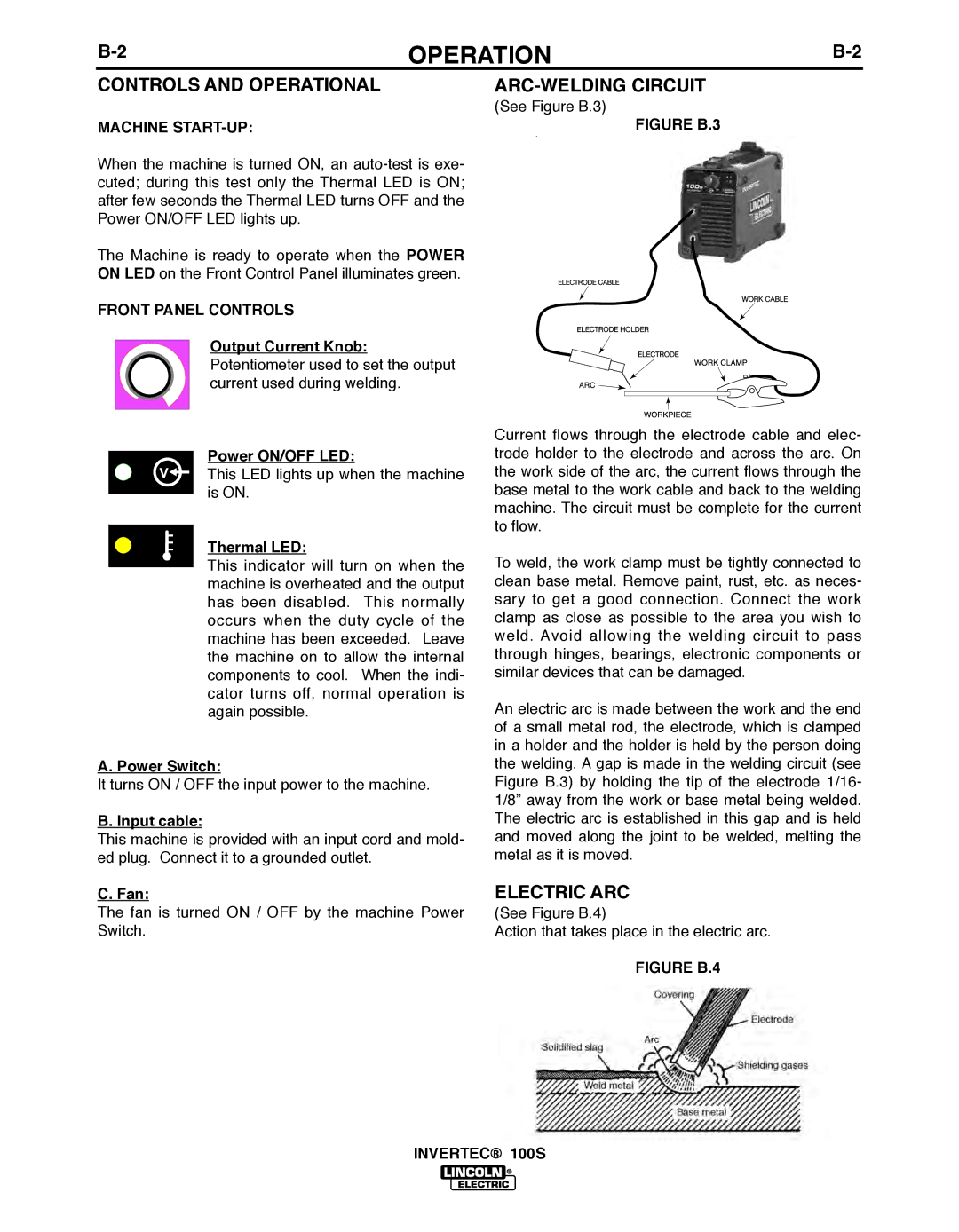100S specifications
The Lincoln Electric 100S is a portable, user-friendly MIG (Metal Inert Gas) welder that has gained popularity among both amateur and professional welders. Known for its reliability and efficiency, the 100S makes a significant impact in various welding applications, including automotive, home repair, and metal fabrication.One of the main features of the Lincoln Electric 100S is its compact and lightweight design. Weighing only around 40 pounds, it is easy to transport, making it suitable for on-site work or small workshop environments. This welder operates on standard 120V household current, eliminating the need for special power sources and allowing it to be used in various locations.
The 100S comes equipped with a built-in wire feeder that allows for smooth and consistent wire feeding. It supports both flux-cored and solid wires, providing versatility for different welding needs. The machine has an adjustable output range, which allows users to tailor the welding parameters to suit various thicknesses of materials, enhancing its adaptability to different welding tasks.
Another significant technology integrated into the Lincoln Electric 100S is the user-friendly control panel. The simplified controls enable even novice welders to set the desired voltage and wire feed speed easily, helping to ensure good weld quality. The variable settings allow users to make quick adjustments in response to different welding conditions.
Safety is a top priority with the Lincoln Electric 100S, as it comes with an over-temperature protection feature, ensuring the machine operates within safe temperature limits. Additionally, the welder is designed to be compatible with a number of safety gear, adding an extra layer of protection for the user during operation.
The Lincoln Electric 100S is also known for its robust construction. Built from high-quality materials, it can withstand the rigors of regular use while maintaining consistent performance. This durability, combined with ease of use and portability, makes the 100S a preferred choice among hobbyists and professionals alike.
In conclusion, the Lincoln Electric 100S offers essential features, advanced technologies, and reliable performance, making it an ideal welding solution for a wide range of applications. Whether you are a beginner or an experienced welder, this machine provides the tools you need for quality results.

